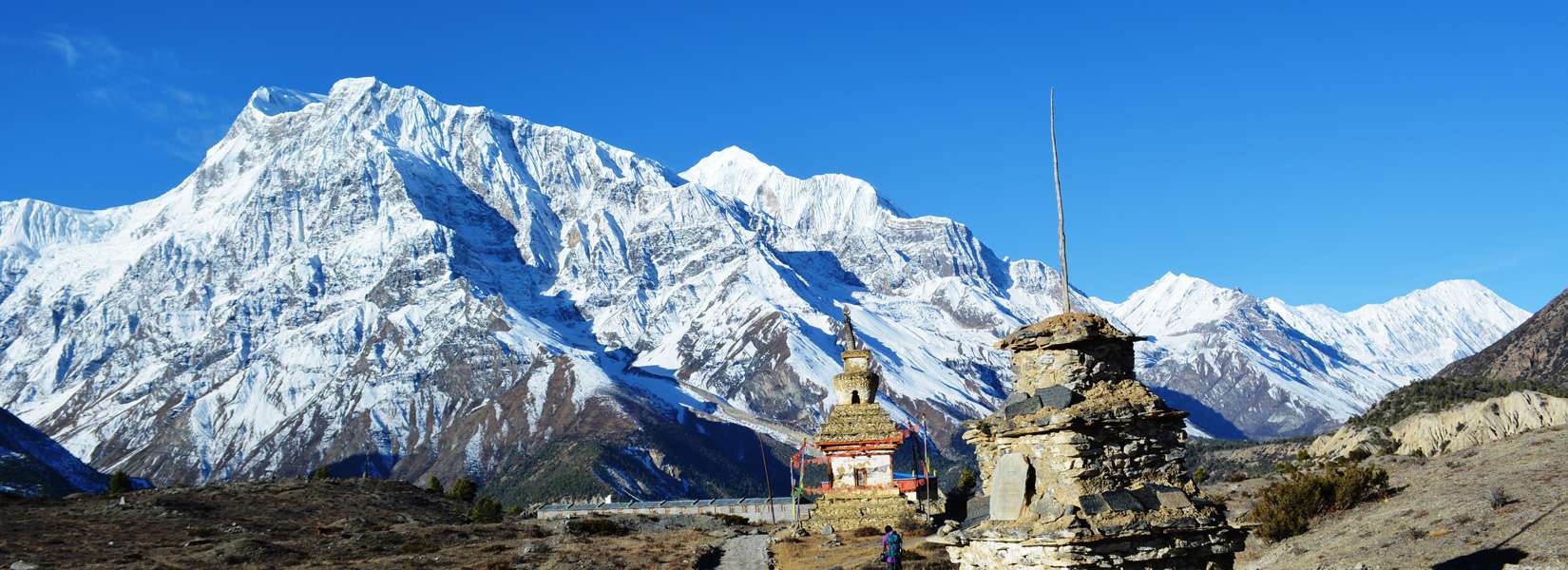Traveling to Everest region is no doubt an ultimate destination for travel lovers. Beside from stunning landscape, explorers in the region can encounter novel Sherpa culture by visiting religious communities and exhibition halls en route. Days are loaded up with strolling for its sheer delight, past brilliant prayer flags swing spans straight out of an Indiana Jones motion picture, while nights are remunerated with hot nourishment and discussion with similar individuals around the fire.
The exciting blend of regular excellence, intriguing society, and an individual feeling of accomplishment, just as warm Nepalese friendliness from the general population of the Solukhumbu area, makes the Everest Base Camp trek one of the world's top destination. You can check our available packages in Everest region here and can contact us anytime for further assistance.
Whereas Annapurna region is another most famous and exotic trekking destination in Nepal. A large number of voyagers visit Nepal to trek in this region consistently. There are a ton of trekking trails in Nepal and it has become famous over the previous decades. Among numerous well-known trekking courses, Annapurna Base Camp Trek has turned into each trekker's fantasy excursion with regards to trekking in Nepal. It is a simpler trail contrasted with the Everest Base Camp.
Prior to arranging any trek in Nepal, you ought to dependably comprehend and contemplate the hazard factors. The climate and atmosphere being the key components. Contingent on the district and the season, climate and temperature in Nepal shift radically. What's more, as you go higher, it gets unusual. You can check our available packages in Annapurna region here and can contact us anytime for more information.
Weather in Everest region
Spring (March to May) and Autumn (September to December) is the best time to go on the trek in Everest Region. It gets hot in May, just before the rainstorm season. Winter comes to underneath zero temperature, yet the days are excellent, and there are fewer trekkers on the trek (however make sure to wrap up warm in the nighttime).
Weather in Annapurna region
The fall season is considered as the best season for trekking in Nepal, yet even in such season, the climate could be capricious at the higher heights. With appropriate research and apparatus, the journey can be made easier. However, every season has its own magnificence and uniqueness.
The second best season after Autumn season in Nepal is Spring. The climate is perfect for trekking in Spring as the climate is hotter and the backwoods blooms with blossoms and you can see green trees all over the place. Springtime begins from the period of March and finishes in May. The trekking trail will presumably be swarmed with a lot of trekkers during this time. It is the best time to appreciate the wonderful mountains Annapurna region.
Things to carry while traveling in Everest region & Annapurna region
First and the foremost, get your body ready for the trek. Be educated in regards to your present wellness level, get the required inoculation and drugs, counsel in regards to the important guide strolls preceding trekking with your specialist or a nearby General Practitioner. Begin practicing somewhere around 4 a month and a half before the trek. Concentrate on cardio practice like cycling, running, running, swimming or tough/stair moving via conveying a knapsack and muscle fortifying activities like pushups, pull-ups, weight lifting, and squats. Next, get your luggage ready. Your checklist should include the following things:
General Gear
- Down Sleeping Bag
- Duffel or Rucksack Bag
- Day Pack
- Down Jacket
- 2 large waterproof rucksack covers (optional)
- Flush Liner
- Trekking Poles
- Water Purification Tablets
- Sunscreen/Lip balm/Wipes/Hand Sanitizer/Toiletries
- Reusable Water Bottle or Hydration Bladder
Head
- Sunglass with UV protection
- Head Torch
- Headband or Beanie
- Neck Gaiter or Balaclava
- Hat for Sun Protection
Upper Body
- Base Layer
- Trekking Shirts/T-Shirt
- Fleece Jacket or Pullover
- Insulated Jacket
- Hard Shell Jacket and Rain Gear
- Down Vest and Jacket
- Gore-Tex jacket with hood, waterproof and breathable
Lower Body
- Non-cotton underwear briefs
- Base Layer
- Hiking Trousers
- Hiking Pants
- Rain and Windproof Trousers
- Fleece or Wool trousers
- Waterproof Shell Pants with breathable fabric
Hands
- Lightweight poly-liner gloves.
- Lightweight wool or fleece gloves
Feet
- Cotton socks (optional)
- Hiking Boots
- Trainers (Trekking shoes/sandals)
- Hiking/Thermal Socks
- Gaiters
Practical Items
- Small roll of repair tape and Sewing-repair kit
- Cigarette lighter and Small box of matches
- Compass or GPS(optional)
- Alarm clock/watch
- Large Ziplocs
- Small folding knife
- Binoculars (optional)
- Large, waterproof, disposable rubbish sacks
- Small Locks
- Trekking Towel
Toiletries/ Medical Items
- Toothbrush/paste (preferably biodegradable)
- Multi-purpose soap (preferably biodegradable)
- Deodorants
- Nail clippers
- Face and body moisturizer
- Female hygiene products
- Small mirror
- Wet wipes (baby wipes)
- Tissue /toilet roll
- Anti-bacterial hand wash
- Isotonic Powder
- Diamox
- General Medications (Including Anti-diarrhea pills, Anti-headache pills, Cough and/or cold medicine, Stomach antibiotic)
- Basic First Aid Kit
- Blister Plasters
- Oximeter
Miscellaneous
- Camera/Video Camera/Extra Batteries/ Extra Chargers
- Notebook/Journal and Pen (optional)
- Playing Cards/Book/Kindle (optional)
- Voltage converter (from 220 to 110)
- Plug adapter (2 round pegs to 2 flat pegs)


